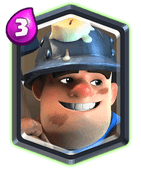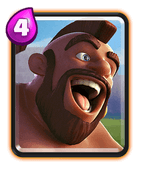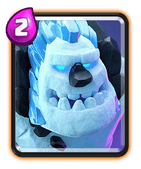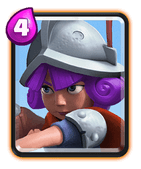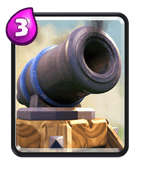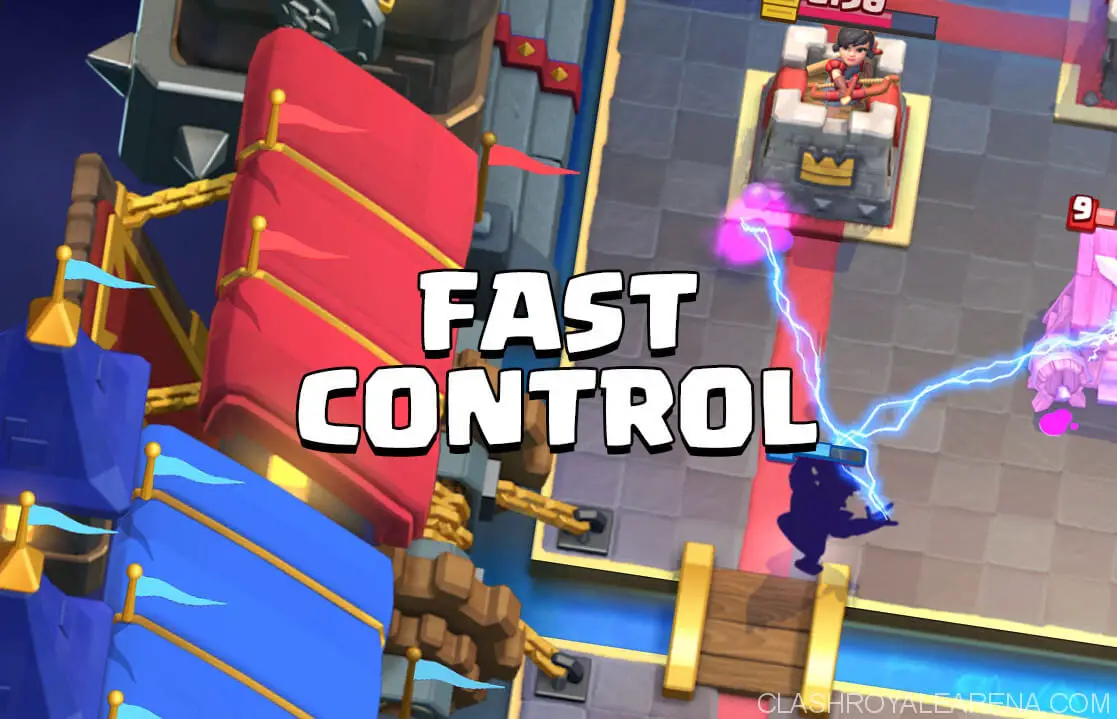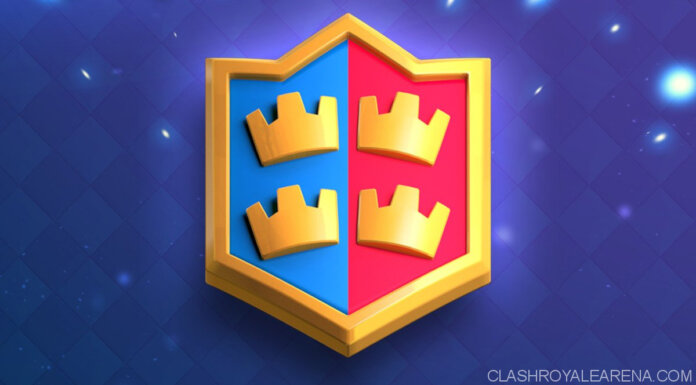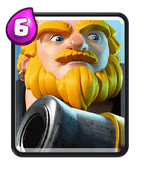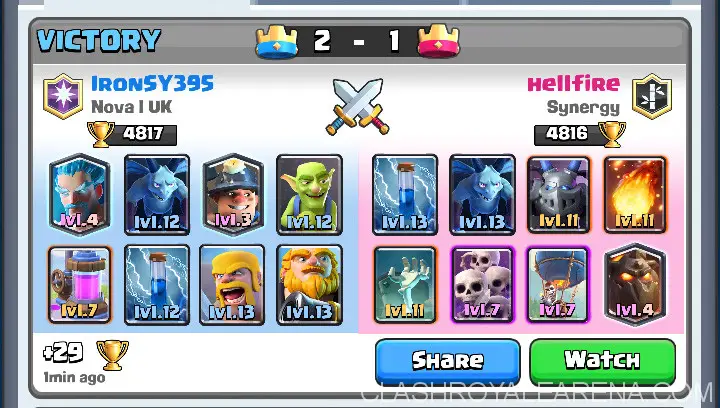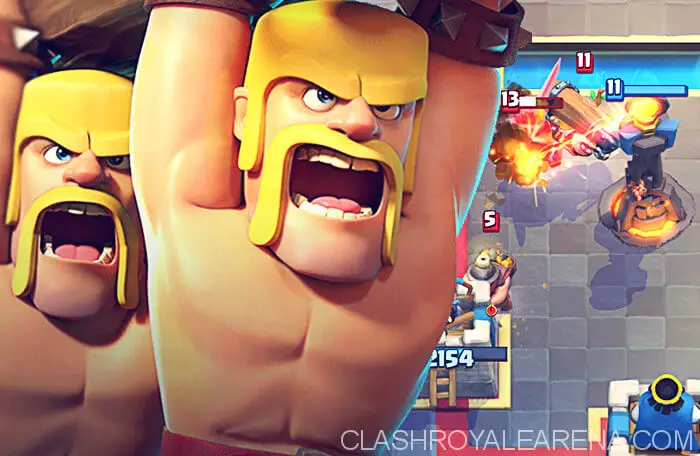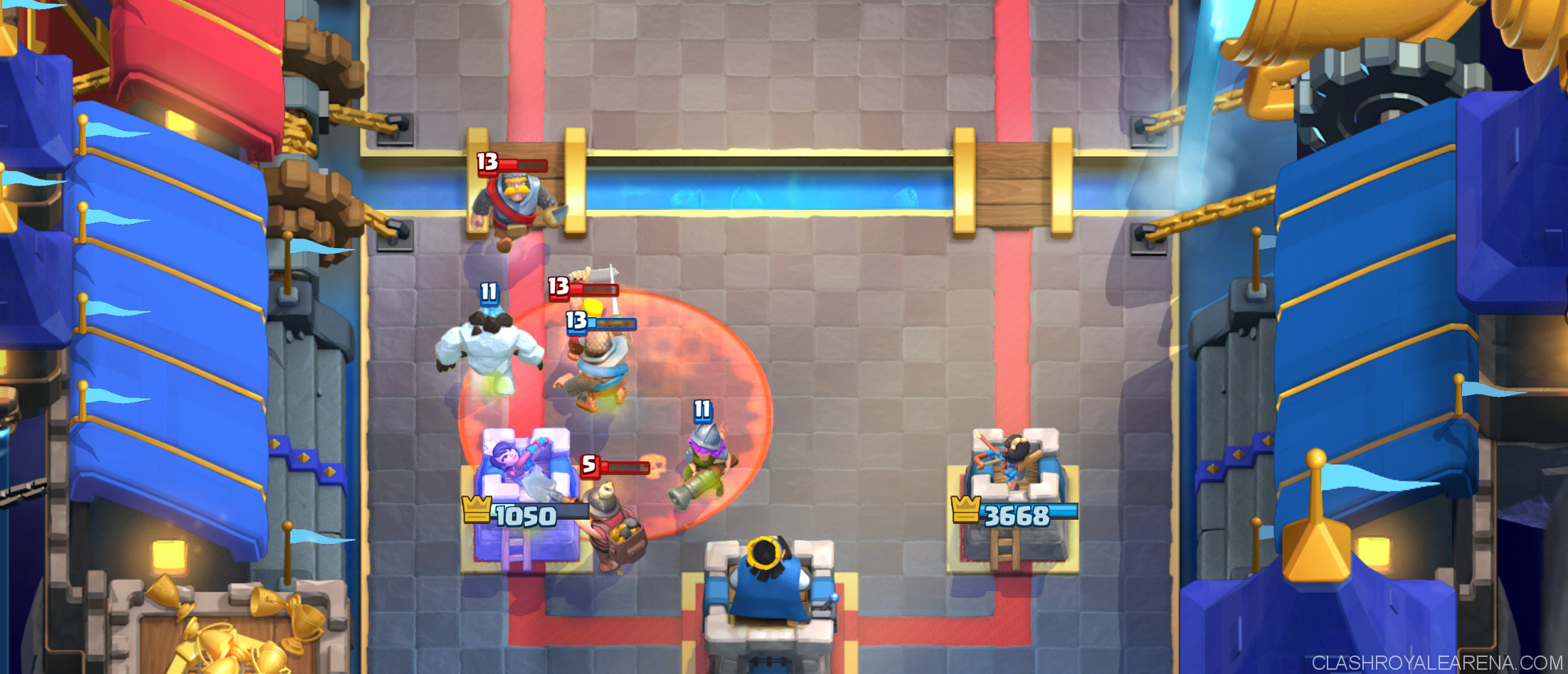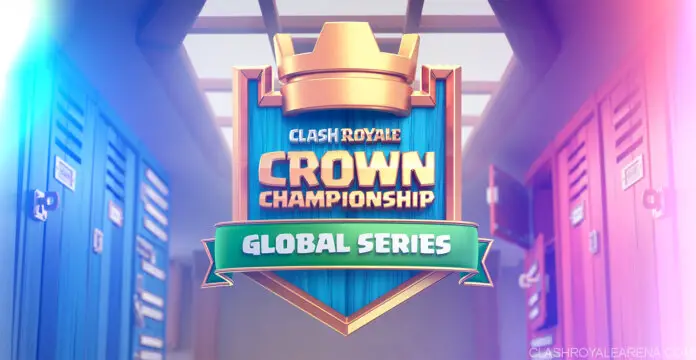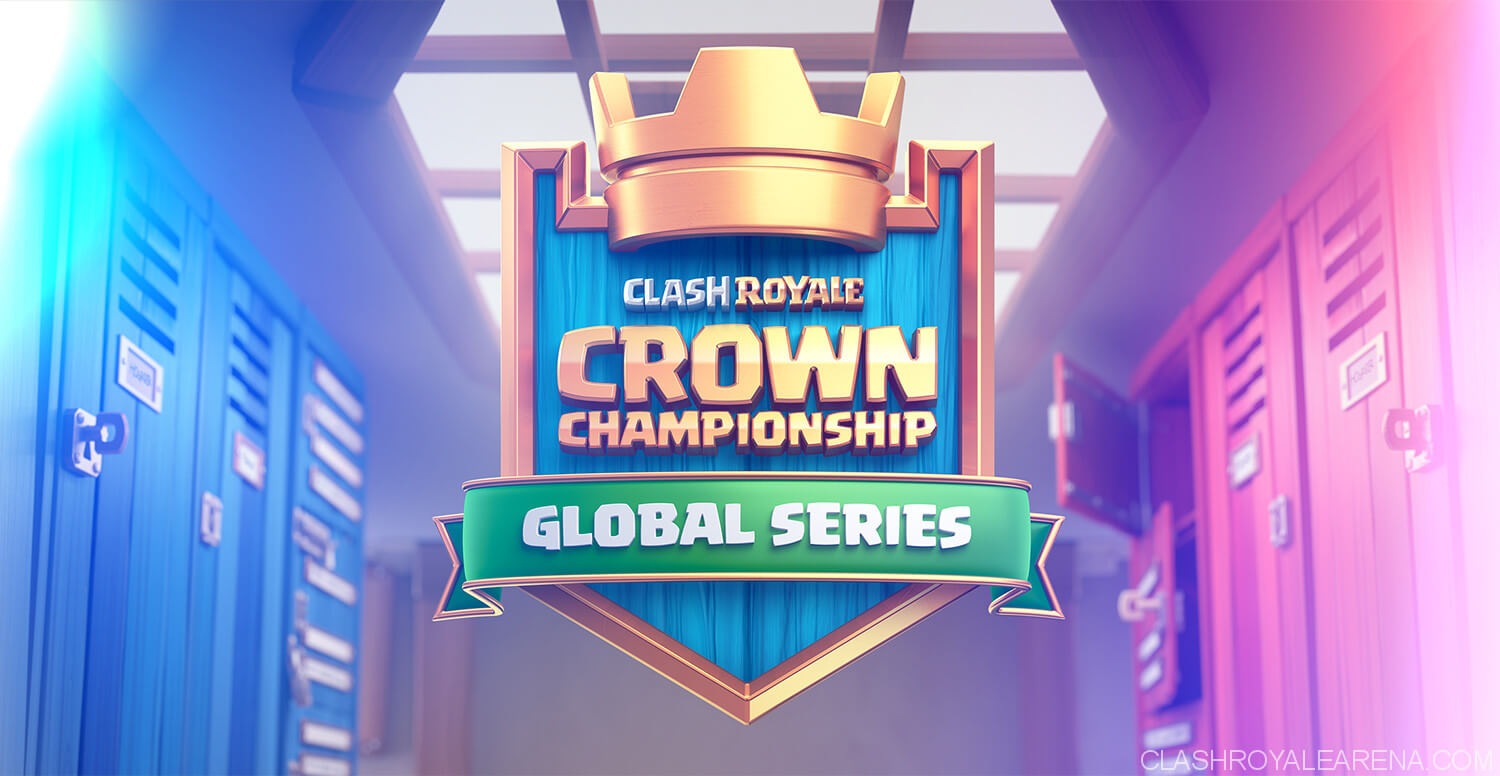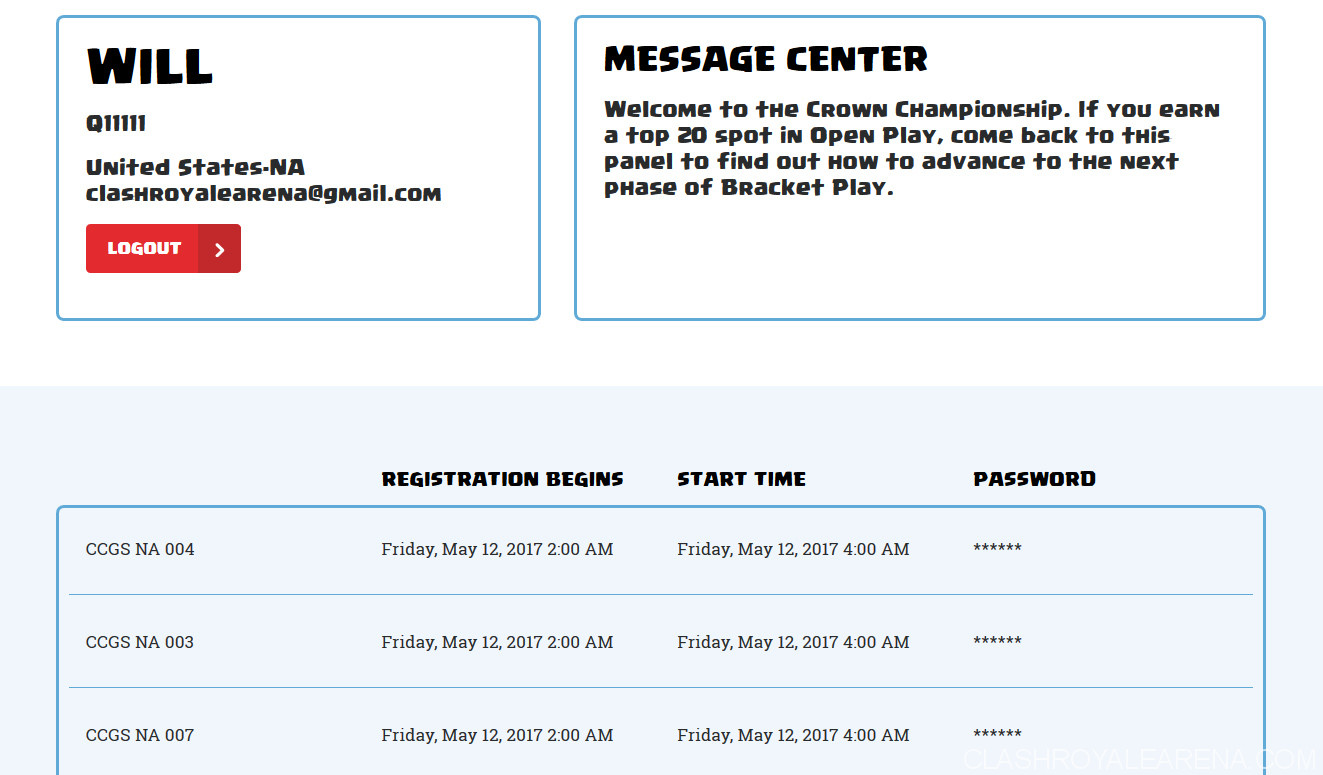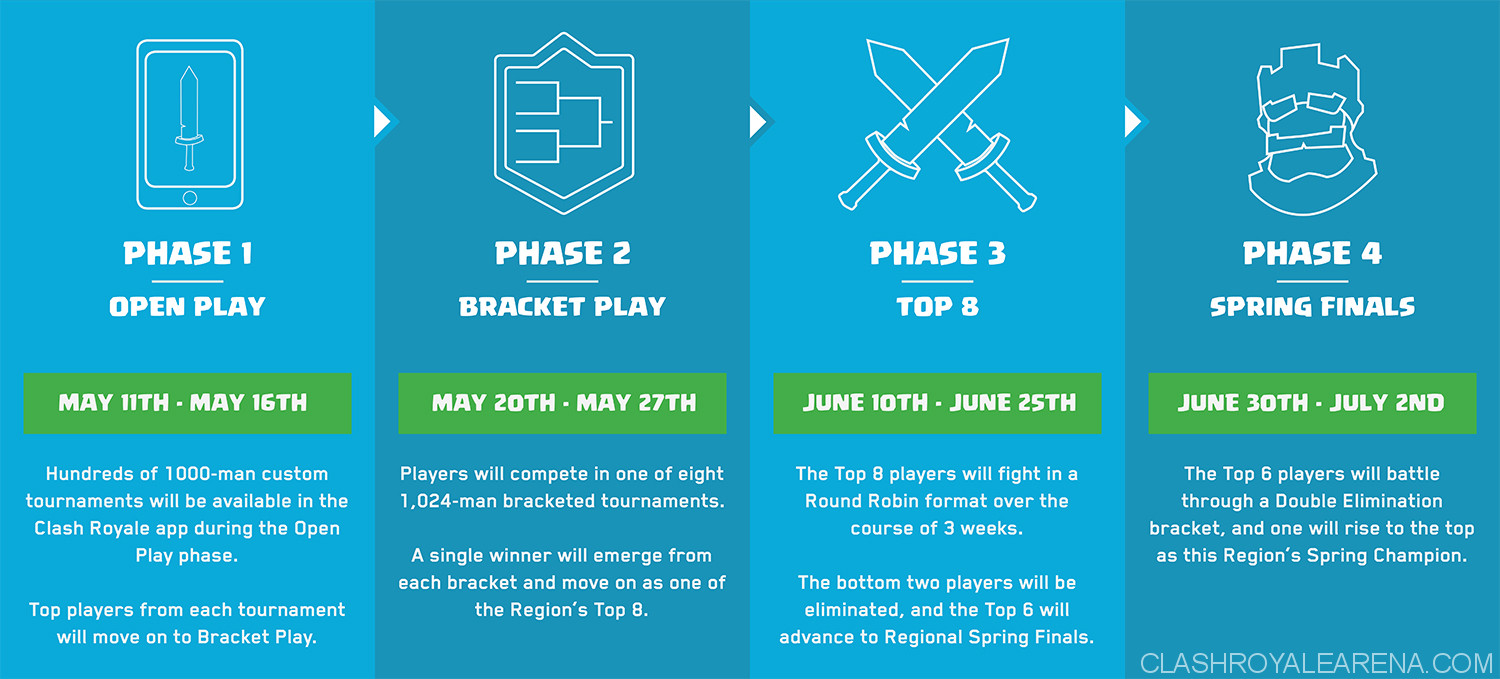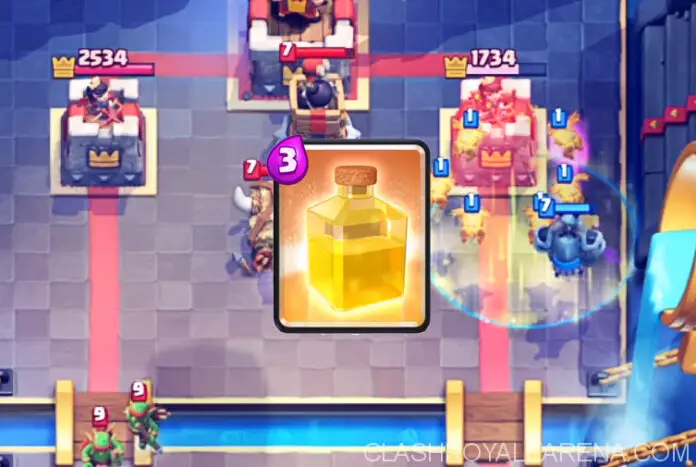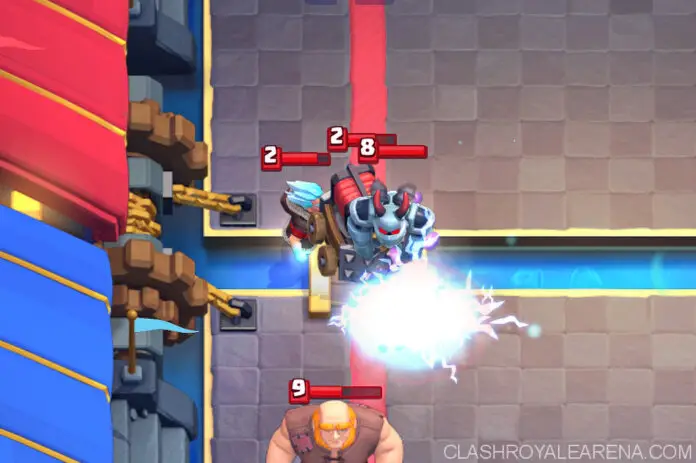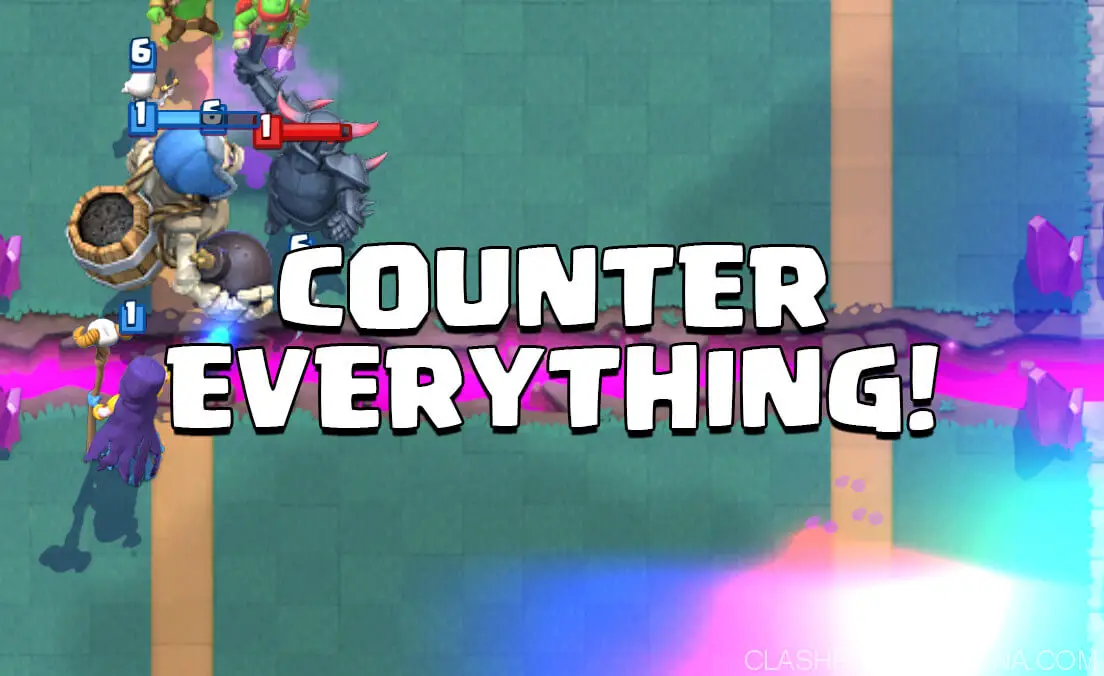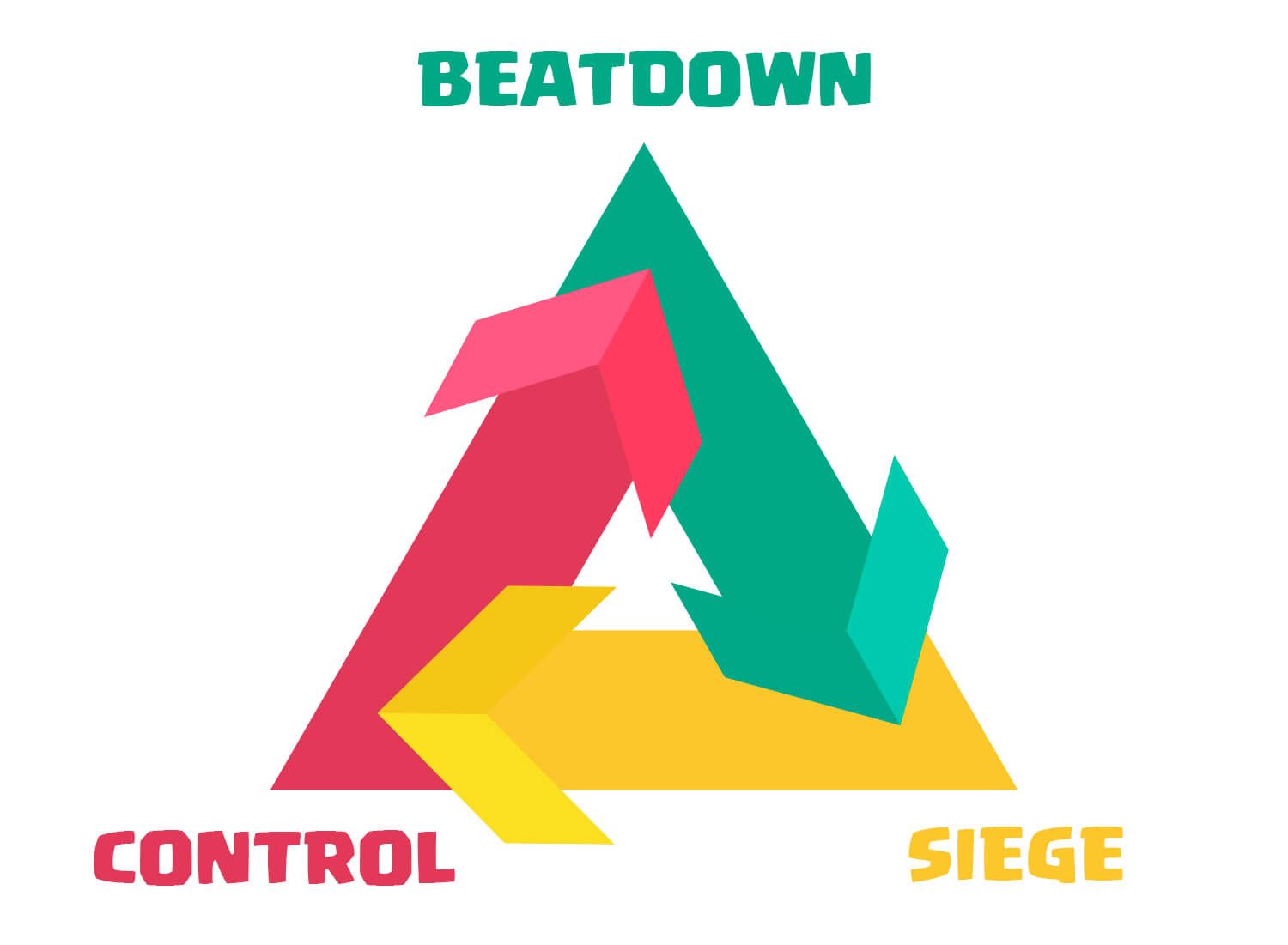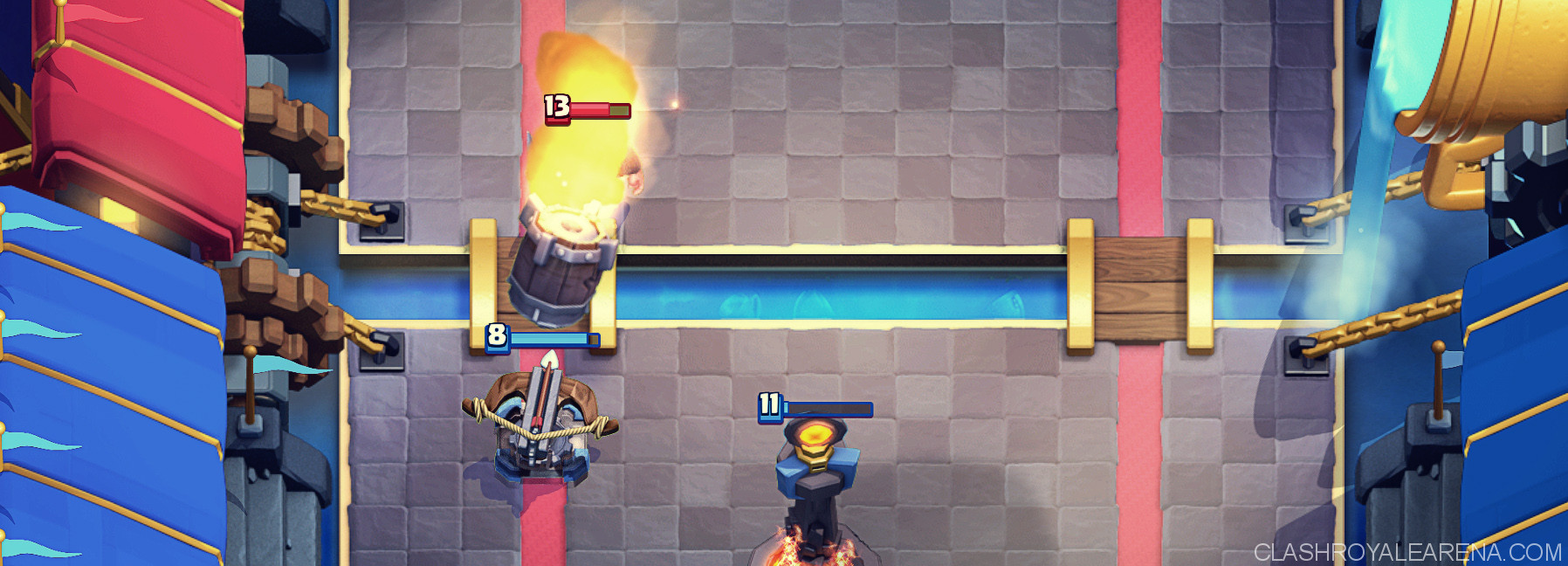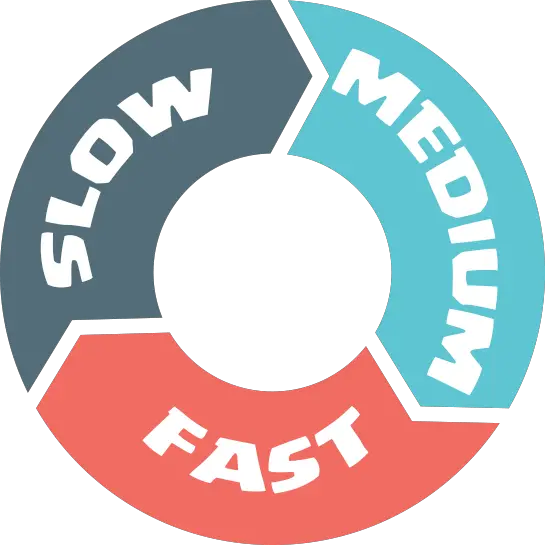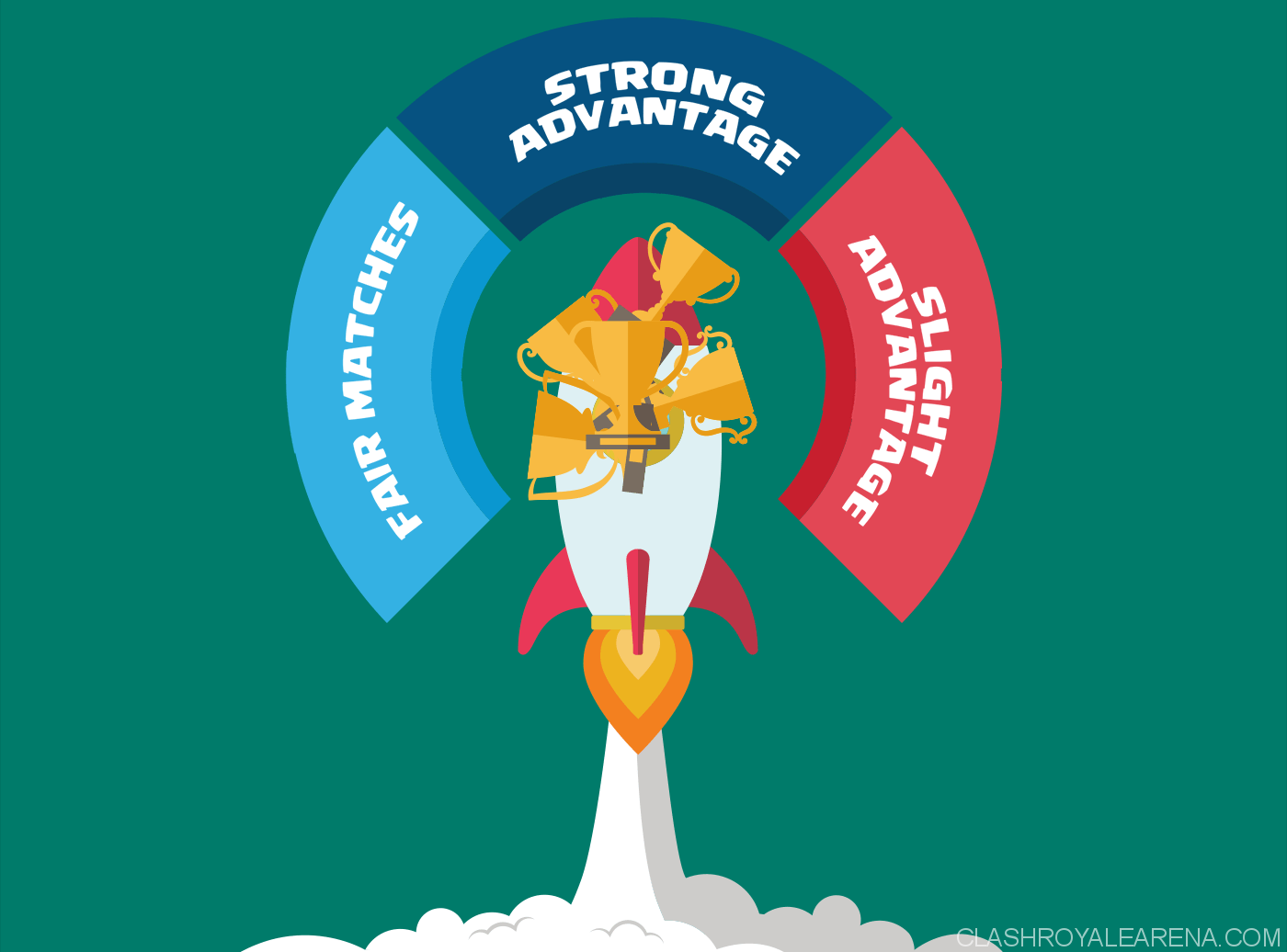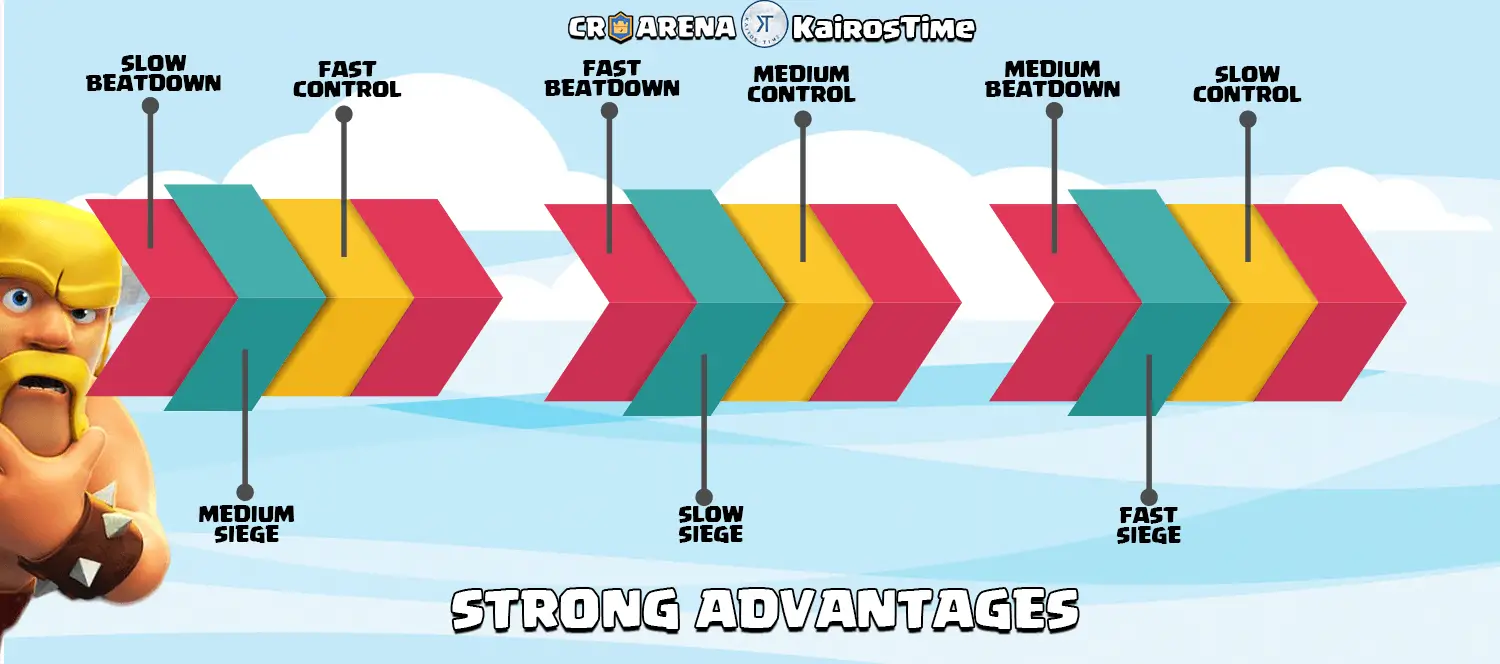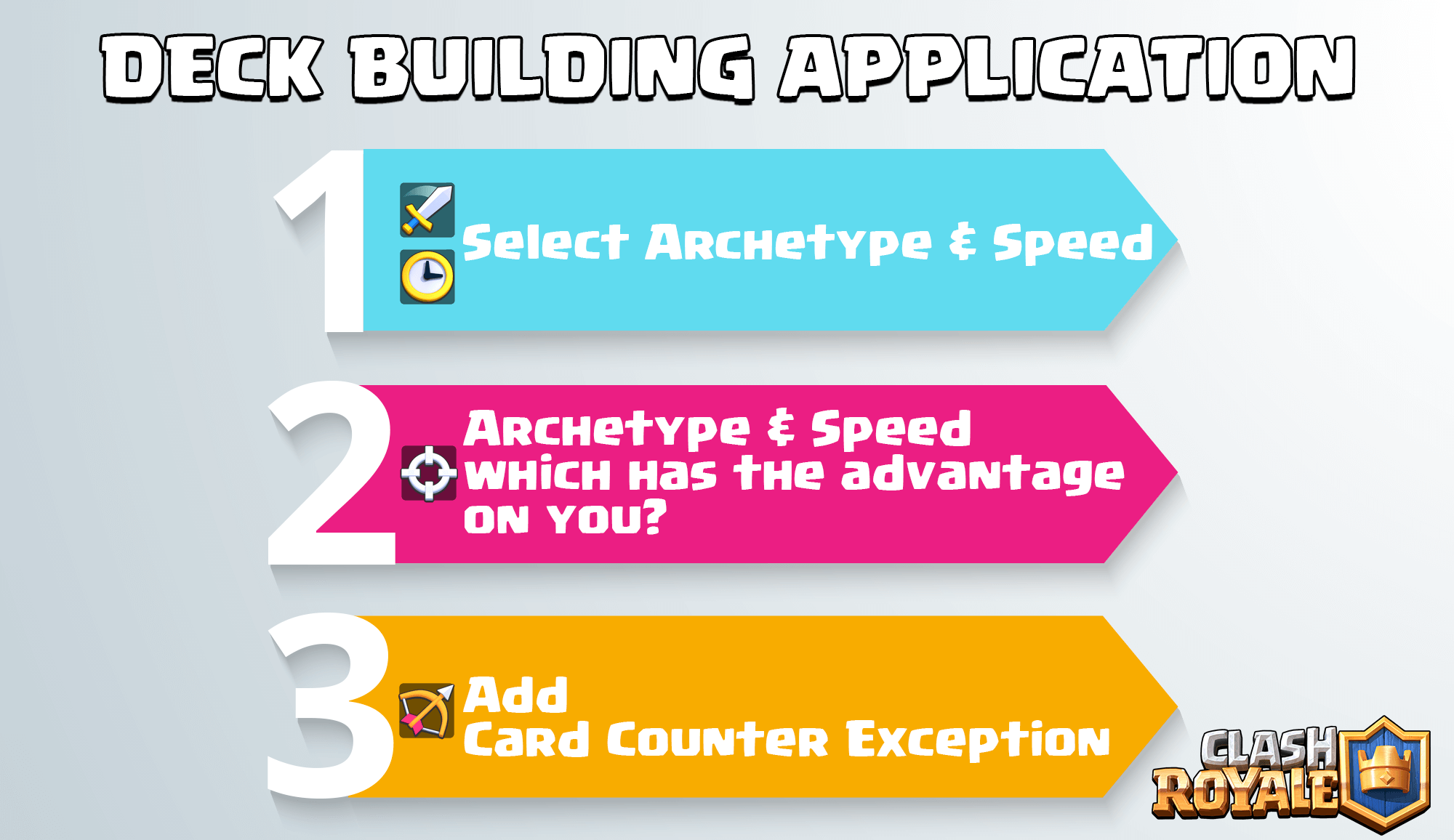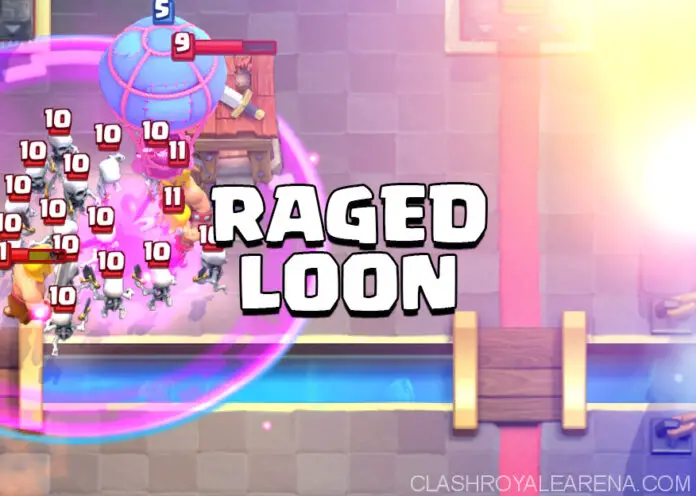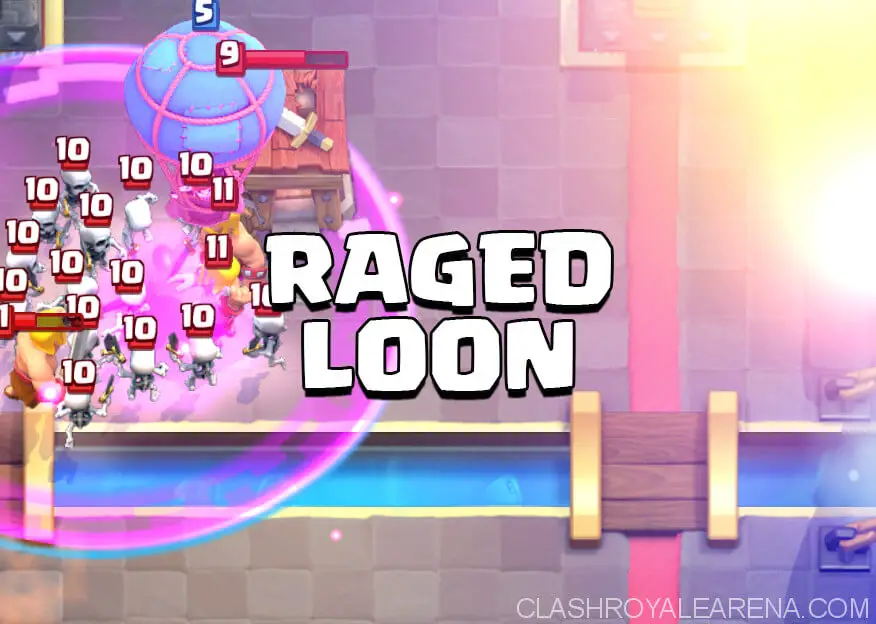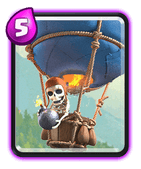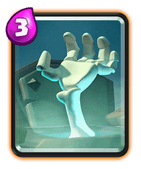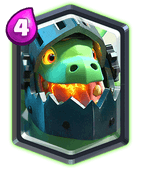There are 8 cards in deck. To win, you have to have the right combination of cards that synergize with each other and work together to create pushes and defend.
A synergy, by definition, is the cooperation of two or more (troops/buildings/spells) to produce a combined effect greater than when used separately.

Table of Contents
Why should I choose two or three synergizing cards instead of one big card that can do it all?
An example of this question is, why choose Knight, Skeletons, and Ice Spirit when you can just choose P.E.K.K.A? (assuming her purpose is defense and you already have a another win condition) The Pekka only takes up one deck slot so already have more room in your deck for other cards.
The Pekka is much sturdier and reliable, so why go to trying to synergize smaller cards?
- This is how people fall into the trap of making an expensive deck. By thinking you can cover more ground with different cards, you will really just struggle to get them down on the board and create pushes.
- Due to the cheap cost, they are quick and easy to get on the battlefield.
- Small plays can be made. What if there is a medium push coming my way but it doesn’t exactly deserve my epic Pekka? I have not gained the Elixir advantage that I want when revealing her. Sad to see a Pekka forced out by a Princess.
- They can be played separately AND together. They also provide coverage for both lanes. If you place a Pekka on one side, the other side is vulnerable to attack. Whereas with cheaper options, you can split troops between the lanes and protect both sides.
- The cheaper cards are so much more versatile and has so much more uses, combined and separated. Low elixir cards in general provide a ton of value for what it’s worth.
Cheap cards synergize with almost everything
The reason why Zap and Log are so popular is because these spells synergize with every troop that does point damage. Both have stalling effects (Zap does stun, Log has pushback), making it even more useful combined with any card. Same for Skeletons and Ice spirit. They don’t do the opposite, but they stall allowing your other troops to get more hits in, making your other troops more effective, or gain more value.
When making a deck, use at least one of these cards and it will guarentee a synergy:

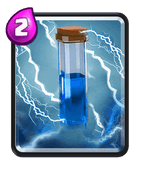
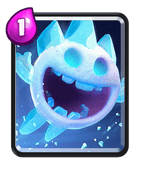
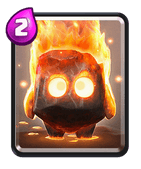
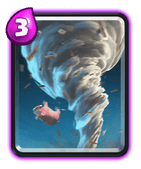
Synergy matters more than levels!
Synergy > Overleveling.
Choosing cards that make each other shine is more important than high level cards that don’t want to cooperate. My advice is use your overleveled card and work with it for now, and once you have the desired card decently levelled, switch.
Synergies help establish the overall pace of the deck
This guide is not about deck archetypes, but this is still relevant. Changing one or two cards could change the whole playstyle.
By changing your Knight, Skeletons, and Ice Spirit, to a Pekka and two other cards you want, you could have a deck that does more on defense, but the problem is that the deck becomes more expensive. (See above)
Synergies can be separated into 2 Main Categories:
One card does what the other cannot, therefore covering each other’s faults
E.g. Ice Golem and Hog Rider This is the bigger group, and is essential for every deck. It is mostly seen in the variation of one splash card and one point damage card. In this category you have considered both units in which your opponent may choose to use: small, squishy troops, and heavy troops. This synergy can also be one tank and small troops (e.g Knight and Graveyard). Leftover squishy troops on defense can then be used on offense by dropping a tank in front, for example Miner.
One card increases the effectiveness of the other card
E.g. Tornado and Splash This mainly applies to spells such as Rage, Clone, and Heal. These spells are not adding or subtracting anything new to the arena, they are just improving on what’s already there.
Synergy on Offense and Defense
Synergy is necessary for getting your push to the tower. Having two spells (one 2-3 Elixir, another 4-6 Elixir) gives you many options of attacking.
Cards in the second category like Rage, Clone, and Freeze have good synergy with all offensive troops. Pick spells and cards that counter your win condition counter.
Follow the meta and know which cards are common counters, so you can prepare your meta counter.
Synergy is less obvious on defense. It is not necessary for there to be two cards on the field that have different purposes just to defend.
Log and Inferno tower is a good example of a defensive combo. The Log allows the Inferno to reach it’s maximum Tier without dying, even if it’s zapped.
A tank and glass cannon is also a common example of two cards that work well together. A Ice Golem can tank Elite Barbarians while musketeer does point damage.
Noob Mistakes Related to Synergy
Picking two cards that are very similar and not used for baiting reasons
I see this a ton with new players. They have Electro Wizard AND an Ice Wizard in their deck. Just because they are good alone does not mean they are good together, in the same deck. They are susceptible to making negative elixir trades when hit with spells. They serve the same purpose, making the deck imbalanced.
Always using the two cards together, because, well… they synergize.
If you have two cards that work well together, by all means, keep using them together. If you have a two card synergy that also synergizes with a third card—a “Triangle Synergy,” if you will, you have the option of combining either of them. Deciding when or when not to use your synergy together requires macro play. By switching things up, your opponent won’t know what your play will be because you have more options at hand. Having synergies allows you to make more plays and be a little more unpredictable.
They care too MUCH about synergy
Not everything in your deck is going to synergize when compared to each other one-on-one. Every card plays a different role, whether it does a better job with another card alongside it or not. Decks that have a unclear win condition can still survive if there is really good synergy with all the cards. Players can create steamroll decks or apply tons of pressure all the time. An example is bait decks. Goblin barrel normally wouldn’t be a win condition, but the other bait cards in the deck allow it to be so. If you are a beginner, make a coherent deck with the correct formula first, then worry about synergies.
Common Synergies
Now lets actually get into the synergy examples. Below are common synergies, and why they work.
Princess and Inferno Tower
The Princess is great at extracting the full value of the Inferno Tower. They are usually seen together in bait decks, but one is log bait and the other is zap bait. If you accidentally clump them together, there’s no worries, because one spell can’t shut both of them down (except lightning).
Many times after defending, the Inferno tower still has a decent amount of health left. Under normal circumstances, your opponent would just sit there watching it rot away. Not when you have the Princess!
Immediately after defending with Inferno Tower, place her at the bridge. This will usually force out cards like Mega Minion or Knight, to which the Inferno tower can roast away. If you’re lucky, you can sometimes force out a Valkyrie or Mini Pekka. Even if your opponent uses small swarm such as Minions, you inferno Tower will be able to tank the damage and still assist your arena tower.
If the push you’re trying to defend has a mix of swarm and tanks, use both at the same time. This way when you’re done, the Princess can walk up to the bridge and start her dread game.
Miner Poison/Rocket
EsoPa 2.9 Miner Posion Guide The cycling of this deck is very important. You want to make sure you can keep using the Miner to have a reason to Poison or Rocket the tower. Poison destroys swarms and Rocket can heavily damage big troops, like Bowler.
In the chance that your Miner doesn’t connect to their pump or is out of rotation, you still have spell options to get rid of it. Keep feeding your spells and you will win!
Poison Graveyard
Poison counters almost everything that counters Graveyard. Exceptions would be tanks like Knight and Valkyrie. The Graveyard’s 10 second duration and the Poison’s 8 seconds make sure enemy troops rot to their full potential. Doot doot!
Fireball and Zap
This can also be Poison/Fireball and Zap/Log. Fireball is literally on the edge of killing so many troops. Zap is the cherry on top. Wizards? Fireball Zap! Three Musketeers? Fireball Zap! Actually, Zap, then Fireball, Because of the Fireball’s knockback. I mean, Fireball, and then Zap before the fireball reaches them. So Fireball ZAP!
Balloon Freeze
This really is High DPS and Freeze. So this would work for Hog Rider, Prince, and so on. Sometimes there are troops that are impossible to get off the map instantly, so instead of doing that, just Freeze em! If you can catch enemy troops at the right time, your enemy will be punished greatly.
Knowing when to Freeze is important so that you can defend counter pushes and punish back in return for not having an elixir advantage.
Disposable units and X-Bow/Mortar
Your main objective is to get as much value as possible per cycle, and that means keeping your X-bow alive. Your support troops should have no intention of connecting to the other side, instead protecting the X-bow and distracting/destroying immediate threats. Cards like Ice Spirit, Fire Spirits, and Knight do this Job well.
Tank and Lightning
- Step 1: Place tank
- Step 2: Use Lightning for Inferno Tower/Musketeer/Wizard
- Step 3: ??
- Step 4: Profit
While you assemble your big beatdown push, your opponent is likely going to pressure you first, and then prepare his defense. Once your tank has crossed the bridge, there will be more than enough value for a lightning. This may be in the form of a building and Electro Wizard. If you use the Lava Hound, Hog cycle players will try to cycle to a second musk.
Other self explanatory synergies
- Zap and Ice Spirit
- Tank and Graveyard
- Mini tank and X-Bow/Mortar
- Tornado and any Splash Troop
- Golem/Lava hound and Clone
Uncommon Synergies
These are some card combos that aren’t seen everyday and that you can have fun with.
P.E.K.K.A 3M
Uncommon because it is so expensive. The Musketeers have excellent range, being able to target towers much more quickly, and sniping buildings or other troops. The high firepower means that common counters to the Pekka are wiped out faster. If my opponent has 3 pumps down with an adequate amount of time left, I’d say GG.
You can take a look at here to see a post on Clash.World about this deck!
Barbarian Hut and Graveyard
A constant stream of tanks is perfect for the Graveyard. Your opponent won’t know when you will activate the spooky music. Barbarian Hut is also very defense, what most Graveyard decks are all about. To defend the never ending Barbarians, your opponent may overcommit on defense, in which you can rush the other side with Knight + Graveyard.
Bandit and Golem
Bandit can quickly get to the Golem’s counters and start hacking away all while the Golem is tanking. Make sure to have a cheap spell to go along with this!
Giant Skeleton and Tornado
I don’t think Giant Skeleton is never not seen with the Tornado (I can’t say the same the opposite way around). He’s a wild card because this combo has the potential to make huge positive trades. We all know how good it feels. Giant Skeleton is not one to get to the tower; just one where you can recover from big negative elixir trades on defense.
Pekka and Tornado
This one’s a funny one. When your opponent tries to rush the other lane or kite your Pekka, pull em over with the Tornado! When your Pekka is about to connect to the tower and your opponent drops troops at the last second, pull them behind the tower so the Pekka will have a clear path to victory.
Some other fun synergies
More on playing an off-meta deck!
Deck Building Regarding Synergy
An excellent deck doesn’t need to shout synergy.
Looking at how cards fit into a deck rather than the synergy of two cards is important.
I won’t include Fire Spirits just because they synergize well with my Hog. I already have other swarm control and by using Ice Spirit instead I can make the deck cheaper. Another example is picking between Minions and Archers in a Lava Hound deck. They are similar, but I would choose Minions because they are an air card, and can distract Inferno towers. In a Golem deck, I would pick Poison over fireball, because I know the Golem will take a while, holding all the enemy troops in one spot.
You must also decide whether you want synergizing spells, synergizing troops, or both. Synergizing spells usually means faster gameplay and quick fixes, like Hog cycle. Synergizing troops means relying on counter pushes and stacking up, like Golem beatdown.
Another thing to keep in mind is balance.
By focusing too much on synergy, the deck may be too offensive or too defensive. If I want to counter the air meta, I may ditch my Musketeer and Ice Spirit that goes well with Hog in favor of Archers and Mega Minion. If I use a cannon instead of Inferno tower or Tesla, I must have other air units to successfully defend Lava Hound.
Below are three decks that have excellent synergy.
Deck 1: Tornado Graveyard
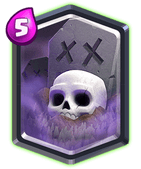




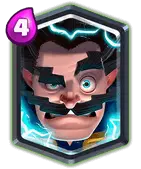


This deck has so much synergy while still being defensive like a tradition Graveyard deck. The Tornado takes advantage of the Blower and Baby Dragon’s splash, while Poison kills enemy troops with the Graveyard. This deck is defensive utilizing the Electro Wizard and Knight. Almost card in this deck can be used as a tank for the Graveyard. Take a look at here to read more about it!
Deck 2: Battle Ram Three Musketeers
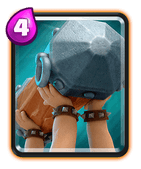
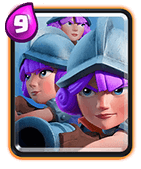
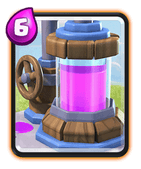


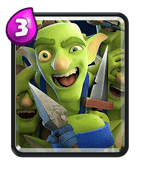


This deck has two tanks for when you split Musketeers. The pump is to gain an Elixir advantage and also bait a Fireball so you can safely bring out your Musketeers. The cycle cards and the Knight are great at defending while you wait till double Elixir. When you split your Musketeers your other cards can be split as well (Zap one side, Ice Spirit the other, Goblin Gang split) to create chaos!
We posted a similar deck on Clash.World before. You may want to take a look at it xD
Deck 3: X-bow
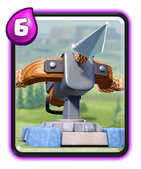
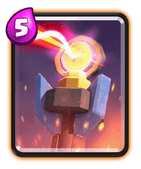

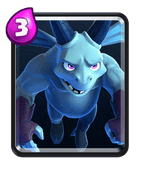




X-Bow has a tough time with tanks, that’s where the Inferno Tower comes in. You can choose to pair it with your X-bow or defend first. Let your opponent make the first move so after defending, your X-bow will have a clearer path to the tower. Cheap cards and the Knight are to make sure getting to your X-bow is 200% harder.
Thinking About Your Own Synergies
This guide does not cover every synergy, just gives a preview of some and their nature. To make your own synergy, think about the following questions:
- Do they die to the same hard counter?
- Do they die to the same spell?
- When played together, how much elixir does it cost? Is it even realistic?
- In what ways is the synergy better than it’s more expensive counterpart? I.e Zap and Ice Spirit vs Arrows
- How will the other cards in your deck benefit because of this synergy?
- Is your synergy able to assist defensively and offensively?
- Is there another synergy that does it better?
Synergies are a big part of this game, and learning how to play them and where they come from will improve your game immensely.
Thanks for reading my synergy guide!
Any criticism, suggestions and questions are welcome, have a nice day 🙂
Shared by CocoZebra
